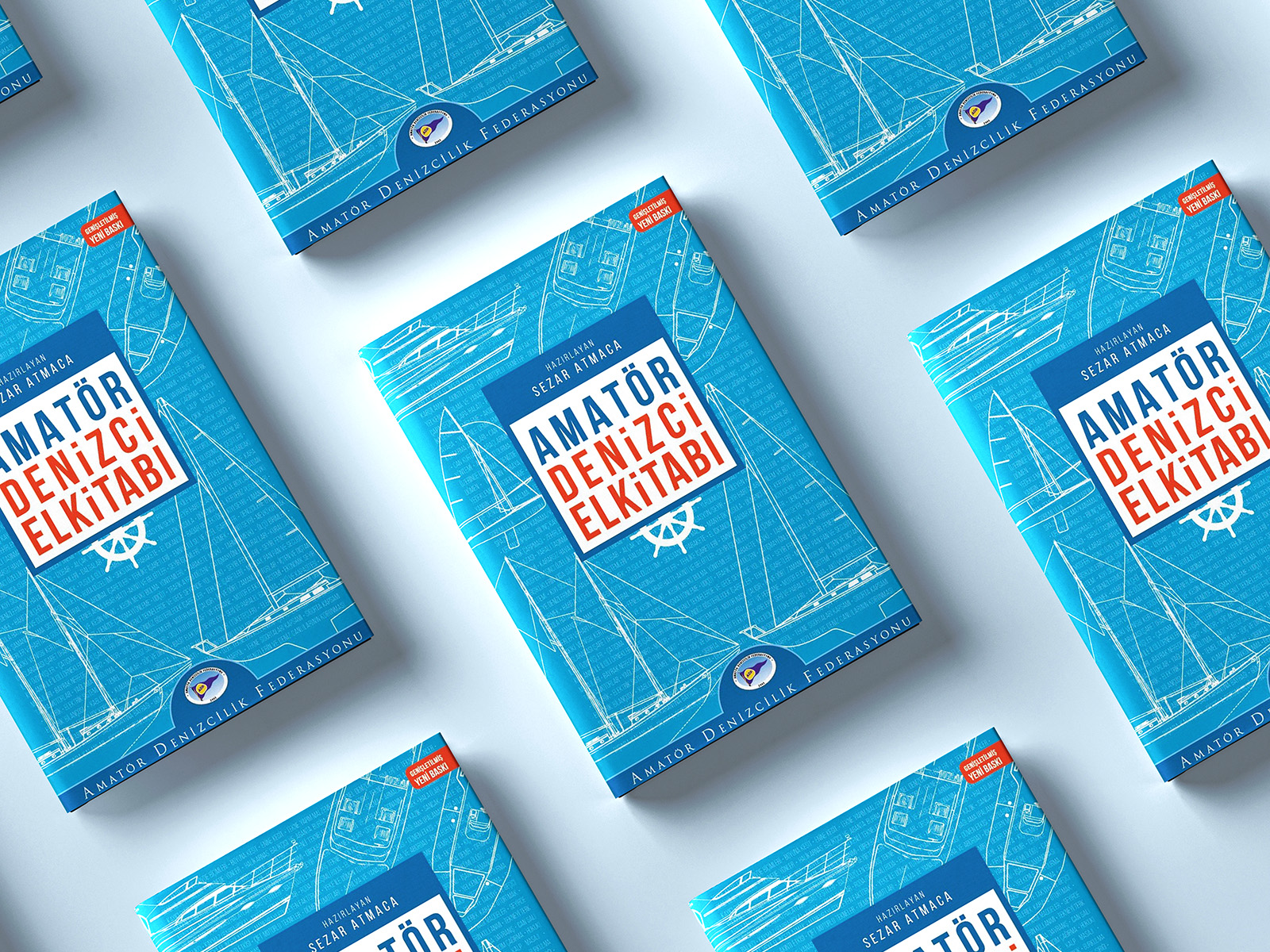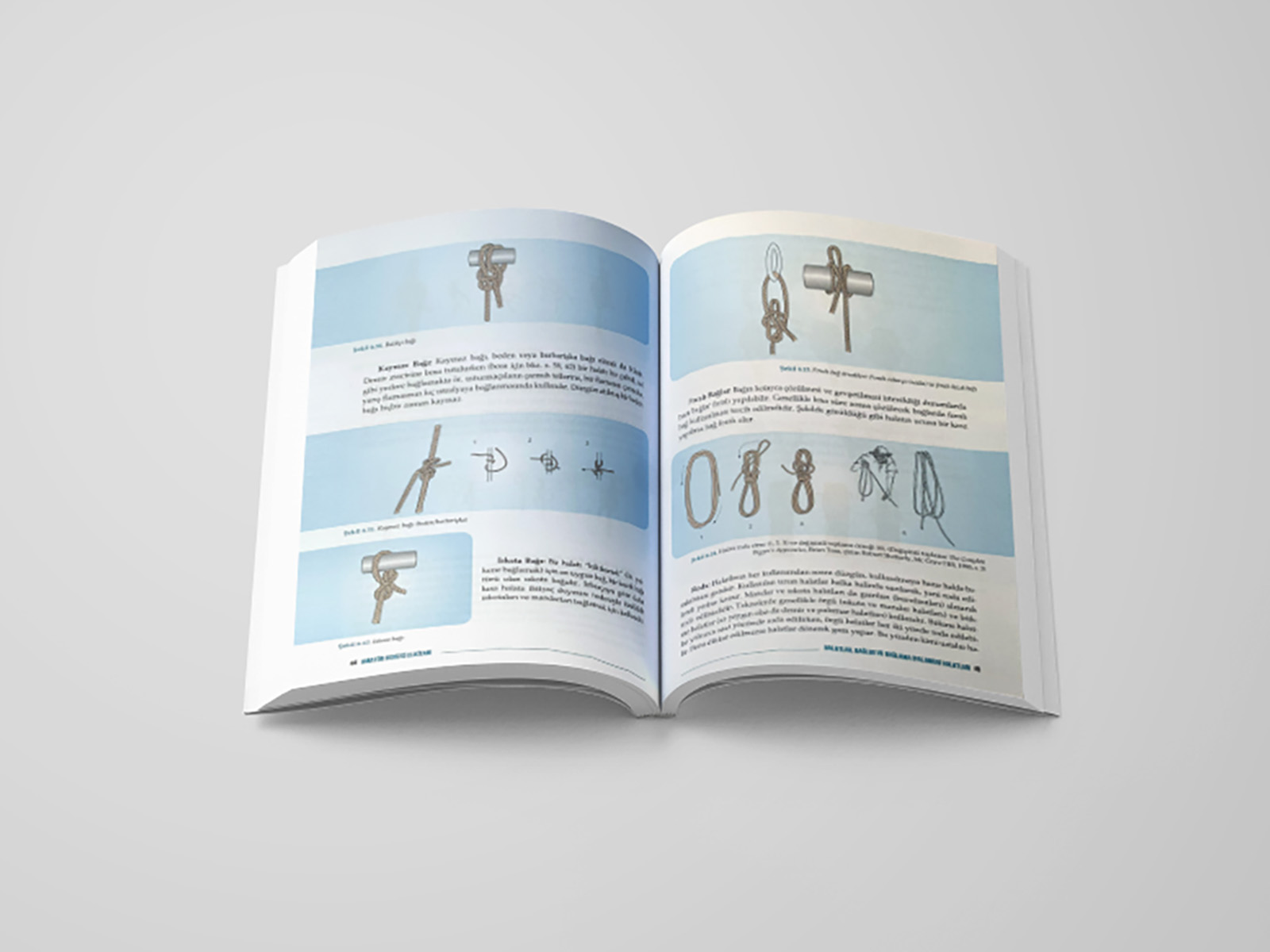The greatest ally of sea enthusiasts: Amateur Sailor’s Handbook
If you take a look at the bookshelf of any boating enthusiast today, you will likely come across a book authored by one of the legendary names in Turkish literature, such as Fisherman of Halicarnassus, Sait Faik or Sadun Boro, who were also avid sailors. Additionally, you will find the ADEK/Amateur Sailor's Handbook, whose pages are likely worn out from frequent use, with almost every line marked and notes taken here and there. We spoke to Sezar Atmaca about the story behind this important work, which has served as the primary reference source for Turkish seafarers for the past 18 years.

Question: We noticed that there is no preface in the book. This seems to hint at a possible story behind the book.
Sezar Atmaca: We did not use a preface in the ADEK/Amateur Sailor's Handbook, we were contented with an "Introduction". Until the expanded 15th edition of the book in 2015, my name was not on the cover so that the name Amateur Maritime Federation/ADF would stand out, which was a choice at the time.
Question: So let's ask, where did the idea of writing this book come from? What happened during the publication process?
SA: ADEK is a first book written/prepared by amateur seafarers, a good source and a starting/preparation book, not the only source. As a matter of fact, there are 27 books, four of which are translations, published in the last 25 years on the basis of general maritime training for amateur sailors.
The story of the book begins with the Amateur Maritime Federation (ADF), which was established as an independent federation, receiving the authority to conduct and regulate amateur mariner and short distance radio certificate (ADB/KMT) exams in 2004 as a result of an agreement with the relevant ministry, which ended in August 2013, which was considered an important step towards the civilianization of maritime in Turkey at the time.
Teoman Arsay asked me which books on the market I would recommend because I was familiar with the relevant literature. I suggested that the existing books were written by professional sailors who were also seafarers, and recommended that ADF create its own book instead. When Teoman Arsay agreed, we were able to make progress quickly. However, without his personal support and trust (he was not yet the ADF president at that time but he had a role in management), there would have been no ADEK/Amateur Sailor's Handbook.
Q: The book is essentially an educational material, a kind of textbook. How did you create the curriculum? What are the inspirations for the methodology you use in the book?
SA: I wanted to put my backbone into this book and carried out various tasks such as selecting, producing, developing text, and editing. Following a preliminary contract with ADF, I prepared the book according to exam regulations. I already had a training book draft that I had been working on for years and had met with three publishers, but we were not able to progress. I used it as a basis for the ADEK/Amateur Sailor's Handbook. I asked Teoman Arsay to write the "Maritime Legislation" section and suggested/selected other authors. I also reviewed the texts and selected the illustrators. We struggled to find the right illustrator and drawings, and it took us four attempts to achieve the desired result with Cem Abbas. Even ordinary drawings were repeated over and over again, suitable examples were sought. Kadir Abbas paginated the book three times and created five different covers.
This book has been a collective effort, with significant contributions from our amateur sailor friends. Some of the chapters were written in collaboration with Âli San, who also authored the "Engine" and "Electricity" sections. Osman Atasoy reviewed and provided consultation on the "Navigation" text, while the late Ali Gündüz was consulted on the same topic. Petty officer İrfan Erkek, who taught us in the Navy, contributed the aphorisms for the "Preventing Collisions at Sea" chapter, while I added the aphorisms for the "Meteorology" section. Occupational safety specialist Serkan Küçük reviewed the "Fire" section, and insurance specialist Mehmet Atay reviewed topics related to insurance. Bayram Öztürk made valuable contributions on marine life and animals. İrfan Papila contributed to the "Staying Alive at Sea" chapter and authored the "First Aid and Health Guidelines on Boats" chapter, ensuring that the chapter photographs were taken with the modeling of sailing athletes. The photographs were taken by our young sailing friends Burak Cora and Hakan Vaizoğlu. Gökhan Abur, with whom we had previously collaborated in a training process and with whom I edited a translated weather forecasting book, wrote the "Meteorology" section. Kürşad Terzi, another sailing athlete, wrote the "Glossary" section. The names of the contributors/authors appear at the beginning of the chapters and in the "Acknowledgements" text on the last page, and it is thanks to them that ADEK is the first book written entirely by amateur sailors, and we owe them all a debt of gratitude.
Teoman Arsay and I read and reviewed the final texts, sometimes on his boat MAT, and Âli San also joined us occasionally. The book took around eight months to prepare. I take full responsibility for any mistakes in the book, and in the early years, we published corrections on the ADF website, giving thanks to those who reported them.
ADEK is distinguished by its language, which is easy to understand, and the inclusion of new and original information, as well as unique drawings and illustrations. The book stands out by enriching the professional-amateur distinction and avoiding repetition of existing books. In developing ADEK's methodology, I examined both domestic and foreign literature and was also motivated by a personal experience of a shortage of domestic resources that were insufficient and "lacked color" when I wanted to learn about seamanship.
Q: One of the first steps of anyone who starts sailing is to buy this book. How many copies of the book have been sold so far, how far has it spread? Do you have any interesting stories from readers?
SA: The book has been reprinted approximately 90,000 times in 25 editions to date, with each new edition being revised and updated to reflect changes in legislation, etc. The first edition of ADEK, published in 2005, was 272 pages long, but in 2009, an additional 8-page sailing section was added. In 2015, the illustrations and text were thoroughly revised, and 34 pages were added, bringing the total number of pages to 308. Additionally, the cover was changed, and several additions and changes were made throughout the book.
We have received pleasant comments even from those who have partially criticized it. I don't remember anyone telling the story in writing, but an interesting incident that happened to the book is the compensation paid by the relevant ministry for unlawful quotation (details can be found at: https://denizciningunlugu.org/adek-uab-usulsuz-alinti-intihal/). By the way, after all these years, you were the only organization that was curious about ADEK's story.

Q: Do you have any plans for the next adventure of the book? Do you plan to make videos and similar tutorials on digital channels, to develop and disseminate the content visually?
SA: I have received three separate proposals for using the book in digital formats. Recently, a live broadcast version has also been offered for creating an exam question book. However, I have avoided these opportunities as they seem too commercial. While these models can be developed to fit the current time and spirit, they should be affordable and easily accessible to everyone. For instance, we plan to provide free access to the exam question samples prepared with Tunç Tokay for ADF on our website https://denizciningunlugu.org. Similarly, the e-book version of ADEK was launched in 2015 as a more accessible and affordable option, which was being sold on an online book sales site for 13 liras. Unfortunately, the contract was terminated in March 2022 due to issues with sales reporting and payment. We still have not found a suitable distribution platform. The book was even sold illegally online last year (priced at 23.6 liras). To put it briefly, the book's relationship with these channels has not been particularly favorable thus far.
As I suggested before: "Although the printing/publication of books such as ADEK/Amateur Sailor's Handbook, Short Range Radio Handbook/KMT, e-ADEK etc. continues, it should be projected to make them available on the internet or to make them open to contributions. E-Learning can also be one of the options." (see: https://denizciningunlugu.org/amator-sportif-denizcilik-icin-yayin-yayincilik-onerileri/, October 2020). However, I have not yet found the right channels to implement these ideas, but I believe they are feasible.
Sezar Atmaca’s website: https://denizciningunlugu.org/
Photographs: Tobias Tullius (Unsplash)


